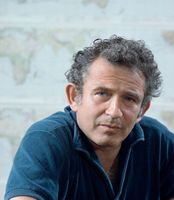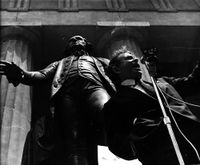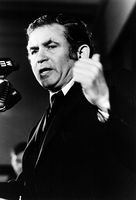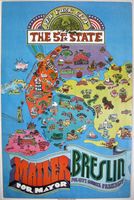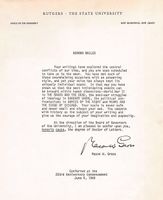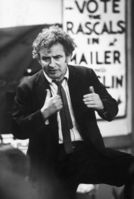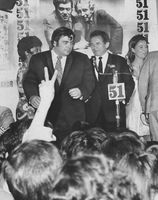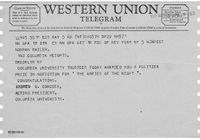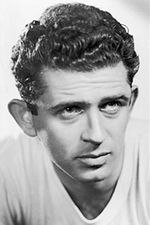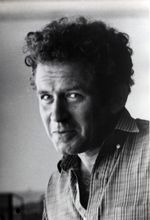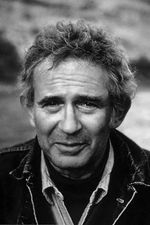1969: Difference between revisions
(Added photos.) |
m (Added image.) |
||
| (4 intermediate revisions by the same user not shown) | |||
| Line 3: | Line 3: | ||
''The Armies of the Night'' ([[68.8]]) wins several awards: National Book Award in arts and letters (12 March); George Polk Memorial Award for magazine reporting (27 March); Pulitzer Prize for general nonfiction (5 May). In addition, ''Miami and the Siege of Chicago'' ([[68.25]]) is a finalist for the National Book Award in the history and biography category. | ''The Armies of the Night'' ([[68.8]]) wins several awards: National Book Award in arts and letters (12 March); George Polk Memorial Award for magazine reporting (27 March); Pulitzer Prize for general nonfiction (5 May). In addition, ''Miami and the Siege of Chicago'' ([[68.25]]) is a finalist for the National Book Award in the history and biography category. | ||
On 1 May, | On 1 May, {{NM}} announces his candidacy for mayor of New York (with journalist [[w:Jimmy Breslin|Jimmy Breslin]] as his running mate). He tells the media, “I will probably be in politics for the rest of my life. I mean it.” He comes in fourth in a field of five in the Democratic primary; Robert Wagner wins, only to lose to Independent Party candidate John Lindsay in the general election. | ||
Awarded honorary Doctor of Letters by Rutgers University on 4 June. Also in June, running as an | Awarded honorary Doctor of Letters by Rutgers University on 4 June. Also in June, running as an “insurgent” candidate for the Harvard Board of Overseers, he is defeated in an alumni election. | ||
In July, he begins coverage of the Apollo 11 mission for ''Life'', traveling to Texas, Alabama and Florida, and interviewing the astronauts and NASA officials. | In July, he begins coverage of the Apollo 11 mission for ''Life'', traveling to Texas, Alabama and Florida, and interviewing the astronauts and NASA officials. | ||
| Line 11: | Line 11: | ||
In August, ''Running Against the Machine'' ([[69.80]]), a collection of documents and interviews concerning the mayoral campaign, and edited by Peter Manso, is published. | In August, ''Running Against the Machine'' ([[69.80]]), a collection of documents and interviews concerning the mayoral campaign, and edited by Peter Manso, is published. | ||
He separates from [[Beverly Bentley]] in late summer, and begins living with jazz singer | He separates from [[w:Beverly Bentley|Beverly Bentley]] in late summer, and begins living with jazz singer Carol Stevens. | ||
The first book-length critical studies of | The first book-length critical studies of Mailer’s work are published: [[Donald L. Kaufmann]]’s ''Norman Mailer: The Countdown''; and [[Barry H. Leeds]]’s ''[[The Structured Vision of Norman Mailer]]''. | ||
{{Gallery | |||
File:1969 nm.jpg|NM in 1969. | |width=200 | ||
File:1969-NM-credit-Paul-Schwartzman.jpg|NM in 1969. Photo by Paul Schwartzman. | |height=200 | ||
File:1969-NM-credit-Richard-Frank.jpg|NM in 1969. Photo by Richard Frank. | |align=left | ||
File:51st State Campaign Buttons.jpg|Campaign buttons. | |File:1969 nm.jpg|NM in 1969. | ||
File:1969 - Photo by Bob Peterson.jpg|Credit: Bob Peterson. | |File:1969-NM-credit-Paul-Schwartzman.jpg|NM in 1969. Photo by Paul Schwartzman. | ||
File:Odd-couple.jpg|Breslin and Mailer. | |File:1969-NM-credit-Richard-Frank.jpg|NM in 1969. Photo by Richard Frank. | ||
</ | |File:51st State Campaign Buttons.jpg|Campaign buttons. | ||
|File:Mailer for mayor.jpg|New York City, the 51st State. | |||
|File:19690604-rutgers-doctor.jpg|Honorary Doctor of Letters. | |||
|File:1969 - Photo by Bob Peterson.jpg|Credit: Bob Peterson. | |||
|File:Odd-couple.jpg|Breslin and Mailer. | |||
|File:1969-Puliter Prize notification.jpg|Pulitzer Prize Notification. | |||
}} | |||
<div style="clear:both;"></div> | |||
{{1950s|state=collapsed}} | {{1950s|state=collapsed}} | ||
Latest revision as of 15:50, 10 June 2020
The Armies of the Night (68.8) wins several awards: National Book Award in arts and letters (12 March); George Polk Memorial Award for magazine reporting (27 March); Pulitzer Prize for general nonfiction (5 May). In addition, Miami and the Siege of Chicago (68.25) is a finalist for the National Book Award in the history and biography category.
On 1 May, Mailer announces his candidacy for mayor of New York (with journalist Jimmy Breslin as his running mate). He tells the media, “I will probably be in politics for the rest of my life. I mean it.” He comes in fourth in a field of five in the Democratic primary; Robert Wagner wins, only to lose to Independent Party candidate John Lindsay in the general election.
Awarded honorary Doctor of Letters by Rutgers University on 4 June. Also in June, running as an “insurgent” candidate for the Harvard Board of Overseers, he is defeated in an alumni election.
In July, he begins coverage of the Apollo 11 mission for Life, traveling to Texas, Alabama and Florida, and interviewing the astronauts and NASA officials.
In August, Running Against the Machine (69.80), a collection of documents and interviews concerning the mayoral campaign, and edited by Peter Manso, is published.
He separates from Beverly Bentley in late summer, and begins living with jazz singer Carol Stevens.
The first book-length critical studies of Mailer’s work are published: Donald L. Kaufmann’s Norman Mailer: The Countdown; and Barry H. Leeds’s The Structured Vision of Norman Mailer.

